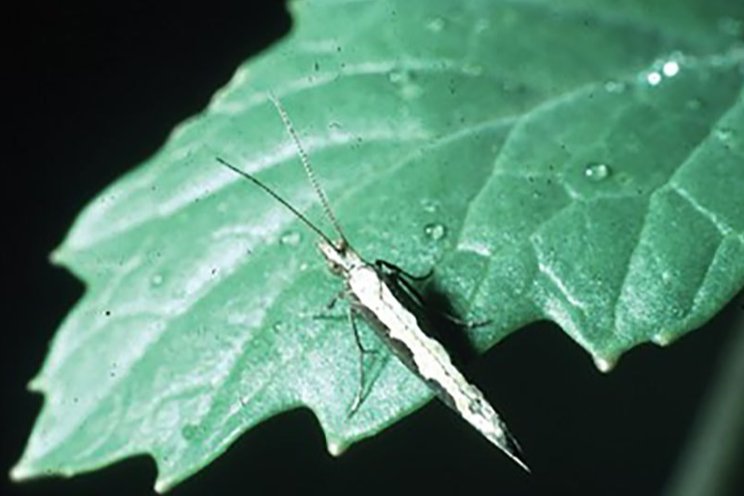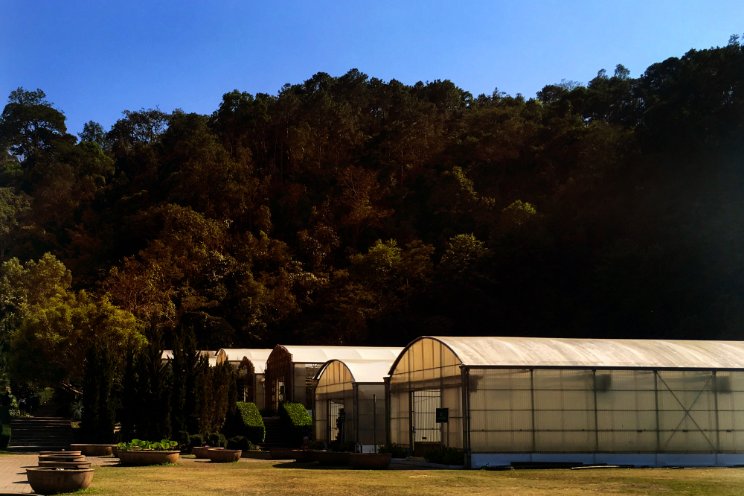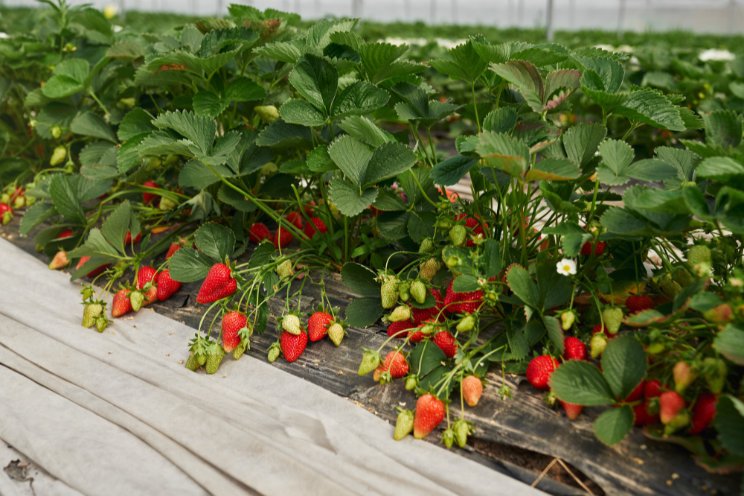Diamondback moth, Plutella xylostella
Added on 21 September 2023

The diamondback moth’s caterpillar larvae chew small circular holes in leaves from the undersides, giving the leaves a shot-hole appearance. Very high populations can defoliate plants. It is a particularly avid attacker of cruciferous vegetable crops, like cabbage, kale and watercress. Affected flowers include perennials like candytuft and annuals like sweet alyssum.
Appearance
The adult is a small, slender, grayish-brown moth with pronounced antennae. It is about 6 mm long and marked with a broad cream or light brown band along the back. The band is sometimes constricted to form one or more light-colored diamonds on the back, which is the basis for the common name of this insect. The larvae are colorless in the first instar, but thereafter are green. The yellowish pupa is 7 to 9 mm in length.
Life cycle
The diamondback moth has four instars. Initially, the feeding habit of first instar larvae is leaf mining, although they are so small that the mines are difficult to notice. The larvae emerge from their mines at the conclusion of the first instar, molt beneath the leaf, and thereafter feed on the lower surface of the leaf. Pupation occurs in a loose silk cocoon, usually formed on the lower or outer leaves. The duration of the cocoon averages about 8 ½ days (range 5-15 days). Adult males and females live about 12 and 16 days, respectively, and females deposit eggs for about 10 days. Total development time from the egg to pupal stage averages 25 to 30 days, depending on weather, with a range of about 17 to 51 days. The number of generations varies from four in cold climates such as southern Canada to perhaps 8 to 12 in the south.
Photo courtesy of Alton Sparks, University of Georgia
More news















